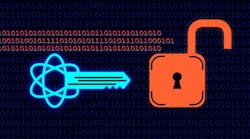NIST formalizes IBM-developed algorithms in the first published post-quantum cryptography standards
Two IBM-developed algorithms have been officially formalized within the world's first three post-quantum cryptography standards, which were published today by the U.S. Department of Commerce's National Institute of Standards and Technology (NIST).
The standards include three post-quantum cryptographic algorithms: two of them, ML-KEM (originally known as CRYSTALS-Kyber) and ML-DSA (originally CRYSTALS-Dilithium) were developed by IBM researchers in collaboration with several industry and academic partners. The third published algorithm, SLH-DSA (initially submitted as SPHINCS+) was co-developed by a researcher who has since joined IBM. Additionally, a fourth IBM-developed algorithm, FN-DSA (originally called FALCON), has been selected for future standardization.
The official publication of these algorithms marks a crucial milestone to advancing the protection of the world's encrypted data from cyberattacks that could be attempted through the unique power of quantum computers, which are rapidly progressing to cryptographic relevancy. This is the point at which quantum computers will harness enough computational power to break the encryption standards underlying most of the world's data and infrastructure today.
"IBM's mission in quantum computing is two-fold: to bring useful quantum computing to the world and to make the world quantum-safe. We are excited about the incredible progress we have made with today's quantum computers, which are being used across global industries to explore problems as we push towards fully error-corrected systems," said Jay Gambetta, Vice President, IBM Quantum. "However, we understand these advancements could herald an upheaval in the security of our most sensitive data and systems. NIST's publication of the world's first three post-quantum cryptography standards marks a significant step in efforts to build a quantum-safe future alongside quantum computing."
NIST's newly published standards are designed to safeguard data exchanged across public networks, as well as for digital signatures for identity authentication. Now formalized, they will set the standard as the blueprints for governments and industries worldwide to begin adopting post-quantum cybersecurity strategies.
In 2016, NIST asked cryptographers worldwide to develop and submit new, quantum-safe cryptographic schemes to be considered for future standardization. In 2022, four encryption algorithms were selected for further evaluation from 69 submissions chosen for review: CRYSTALS-Kyber, CRYSTALS-Dilithium, Falcon, and SPHINCS+.
In addition to continued evaluations to publish Falcon as the fourth official standard, NIST is continuing to identify and evaluate additional algorithms to diversify its toolkit of post-quantum cryptographic algorithms, including several others developed by IBM researchers. IBM cryptographers are among those pioneering the expansion of these tools, including three newly submitted digital signatures schemes that have already been accepted for consideration by NIST and are undergoing the initial round of evaluation.




